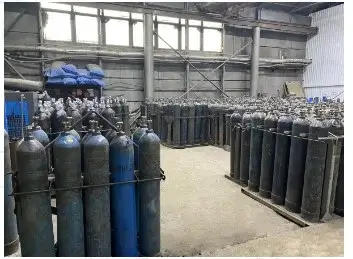A special group of substances, in gaseous or liquid state, which is used in the technical, chemical or food industries. Industrial production of technical gases is extremely important to be able to use them as necessary raw materials for chemical processes or their slowdown As a rule, gases are delivered to the consumer in a liquefied state by rail or road tanks.
The most important gases in industry
It is very important that the raw materials do not have a large amount of impurities. In some cases, even 1 percent of a foreign substance can play a negative role in the production of a special metal alloy or during critical welding work. The most important and in demand gases include the following groups:
- Nitrogen - the optimal refrigerant and an indispensable assistant in agriculture.
- Argon - cutting and welding of ferrous and non-ferrous metals, their various alloys.
- Helium - used in the medical field, a food additive to some products.
- Oxygen is one of the most versatile gases in all types of industries.
- Acetylene – a flammable gas used in the production of solvents.
Propane can also be classified as an industrial gas that produces a high temperature during combustion. But, it is supplied to the consumer mainly in a liquefied state in special cylinders. During normal storage, gases do not lose their purity and effectiveness during practical use.
Features of storage and transportation
In its natural, gaseous state, storing and transporting a substance is not very convenient and practical. The cylinder is under high pressure, an additional danger that has to be taken into account. If possible, the manufacturer achieves a liquid state of the gas, in which it takes up relatively little space. It is worth adding to other features of this state of aggregation of gas:
- transportation by rail or trailer is possible;
- long-term storage in a shipping container;
- transfer through pipes communications with sealing;
- the risk of leakage of a large amount of gas is minimal;
- simple transformation into a gaseous state.
The liquid gas cylinder is located under a relatively small pressure. There is no risk of damage to the container with catastrophic consequences. If you follow simple transportation rules, technical fluids will be supplied in full from the manufacturer for direct use to the end consumer.





